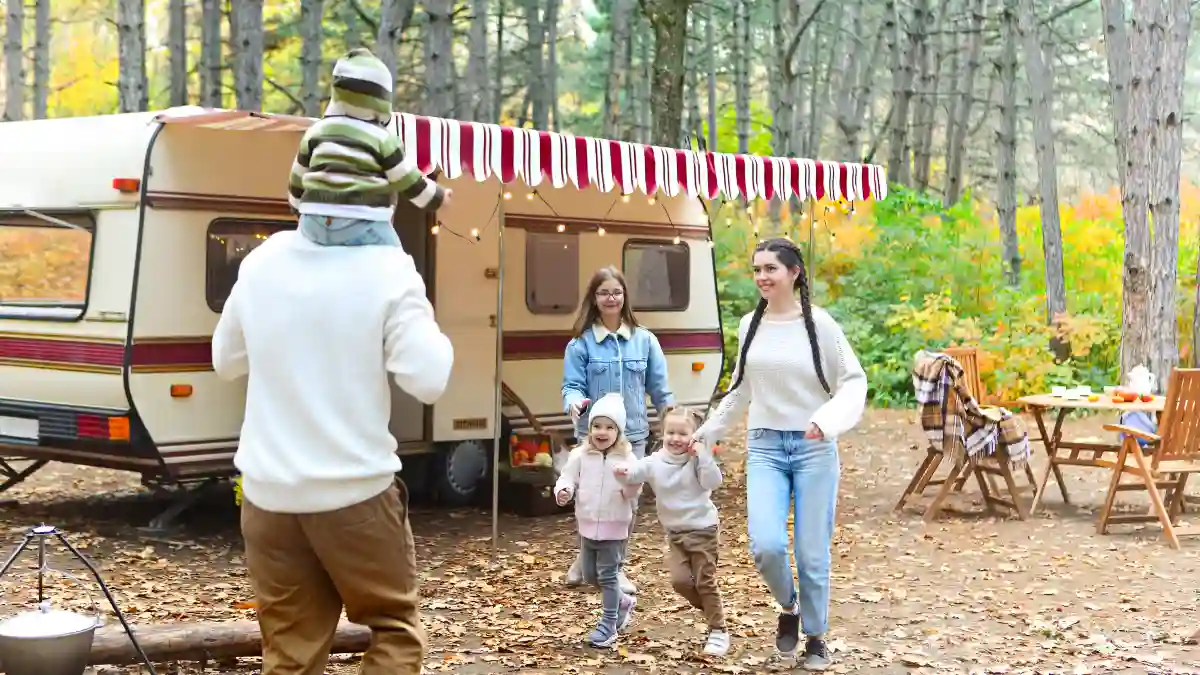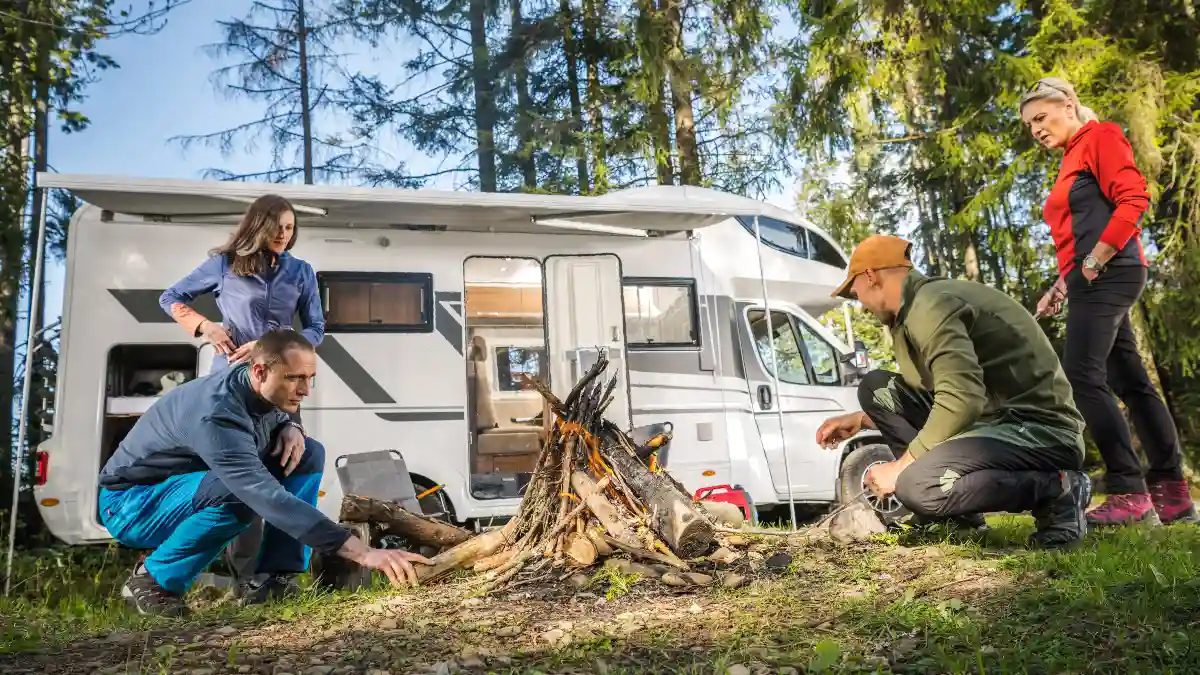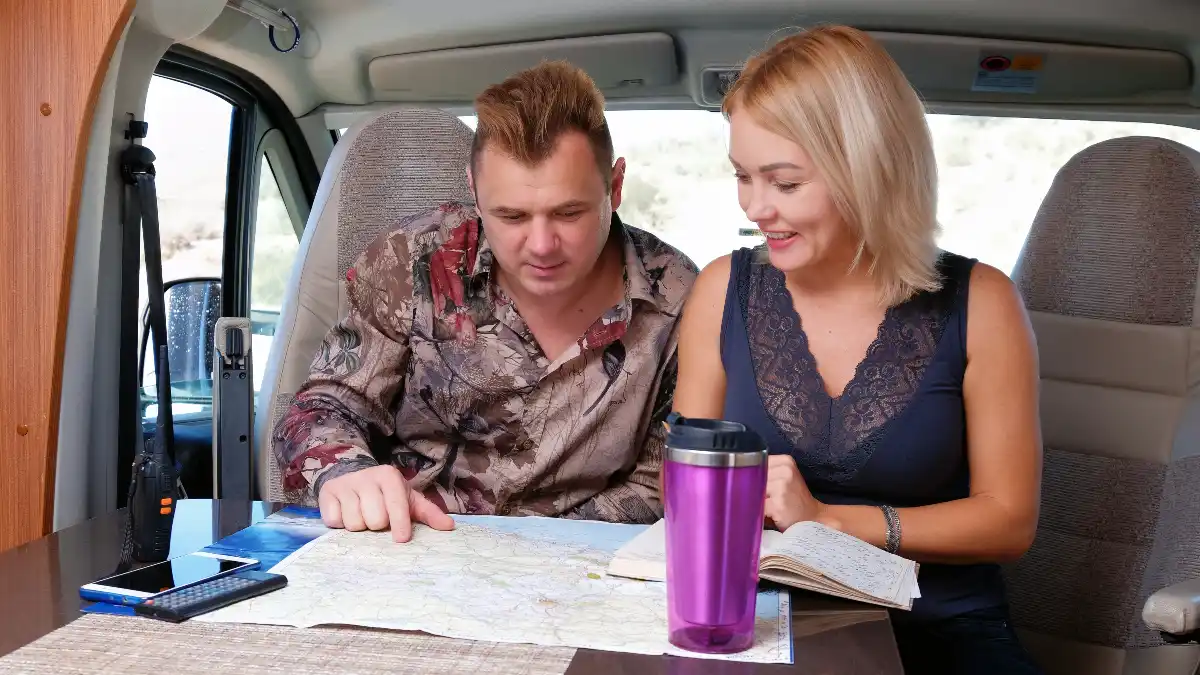
You often hear that RV families break up because they stop getting along. That’s usually wrong. Studies show RV life actually makes family ties stronger. The real reason people quit is external to the family: logistical burnout.
The fun of outdoor living, which works for young children, breaks down when it meets the non-negotiable needs of a teenager. They need privacy, a social life, and fast internet for school.
Parents who quit say their older kids’ changing needs forced them to seek a life with more community and routine. The following sections break down the four biggest problems that cause this burnout, so you can fix them before they happen.
Why Do RV Families Quit? The 4 Core Problems

The decision to quit the full-time RV lifestyle, despite the strengthening of family relationships documented in many surveys, shows that the reason people quit comes from outside the family unit. The breaking point happens when the fun of outdoor life—which is great for younger kids —gets ruined by the needs of teenagers.
Parents who quit often say their older kids’ changing needs forced them to look for a life with more routine and community. The family may still be close, but the lifestyle itself will break down if you do not change it for your teen.
The next sections explain the four main problems that cause full-time RV family burnout.
Problem 1: How to Fix the RV Privacy Trap

The biggest physical clash is between your small RV space and your teen’s strong need to be alone. Privacy is described as “incredibly important during the teenage years”. In a normal RV, you simply cannot meet this demand. This quickly turns your RV from a fun adventure source into a psychological “trap”.
Being close all the time causes stress. Humans need routine. When you move constantly, and you mix that with normal teen mood swings, the small RV space starts to feel awful. This change in how your teen sees the RV happens before they feel any actual physical discomfort. Small problems become huge fights that threaten your family’s peace.
This problem also affects your long-term plans, especially when you are “launching your teen” into college or adult life. To get ready for college or independent living, families often need to stay put for a few months, or even years. This stability is needed to get residency, finish college papers, or let the young adult settle down.
This need for long-term stability directly fights against the idea of always traveling. It forces families to quit too soon. Paying for a bigger RV that helps with these needs is a great way to prevent family members from wanting to leave the road.
Problem 2: Stopping Loneliness and Social Isolation

The second main problem is the need for teens to fit in socially and emotionally. This is hard to keep up when you are always moving. You will quickly see how teens change: they used to love inchworms, but now they only ask if the “good Wifi” is available.
This shows that digital connection is the main way today’s teens stay social. It links them to friends and helps them figure out who they are. If the internet fails, loneliness starts fast.
Worry about mental health is huge for parents. Four out of ten U.S. parents worry a lot that their kids might struggle with anxiety or depression. When young people are away from home, homesickness is the most common mental health issue. RV life is not summer camp, but constantly leaving established friends and community behind—plus having no break from family—can trigger similar emotional distress.
Always being together in the RV limits the chances teens have to grow independent. Experts say that always stepping in or “rescuing” kids from problems can mean they are not “ready” to face real-world problems. You have to find a balance.
You must step back and let your teen solve their own problems, like setting up a video chat with a friend or troubleshooting a connectivity issue. When the physical environment (the small RV) and the close presence of parents stops this important chance for growth, the teen feels stuck. This leads to anger and stress.
Problem 3: Get Rock-Solid Internet for High School

The third problem is the difficulty of keeping up good grades while traveling. If you are roadschooling high school, fast, steady internet is not a luxury. It is a necessary tool for education, remote work, communication, and mental wellbeing.
RV families have a big hurdle here. To get good service for streaming classes, live learning, and parent work, you need backup systems and expensive gear, no matter where you are. This need adds a lot to your budget and makes planning harder. If you only rely on one source (like a satellite or cell service), you risk your teen failing school. That risk is too big.
If your internet is not consistent, your teen could miss homework, fail to send in test scores, or ruin their school transcript. This failure—which comes from bad tech, not bad effort—is a major reason parents stop RV life and move to a place with steady utilities. Your teen’s school future is the point where most families finally give up the lifestyle.
Problem 4: Stop Budget Breakdown and Surprise Costs

The last major reason for full-time RV family burnout is the constant money stress. It comes from unexpected, high costs needed to support a teenager on the road. Many people start RV life hoping to save money, but the actual costs can destroy that hope.
Monthly RV living costs change a lot, from about $1,600 to over $5,000. It depends on how much you travel and what features you need. But teens need fast data, good laundry, and social spots. This pushes your required budget to the high end. Campgrounds with full hookups (electric, water, internet) cost more than those without. If you stay a long time, you might have to pay extra for separate utilities.
Also, costs are very hard to predict. Families quickly learn that their paper budget misses the surprise costs that happen every month. Repairs and maintenance eat up money. One family reported an average monthly expense of $400 for gas and maintenance, but their worst month cost $3,400 for truck, RV, and tire repair. If you already pay high fixed costs for your teen (like expensive data or rally fees), a big repair bill can wipe out your savings. This forces you to stop traveling and causes quick burnout. Teens’ high fixed-cost needs leave you with no cushion for the inevitable breakdown.
How to Build Privacy and Boost Mental Health

To stay on the road for a long time, you must see your RV as a tool for your teen’s mental health. Buying a bigger RV or making changes is more than just a comfort upgrade. It is an investment in keeping your lifestyle alive.
Noise, clutter, and no private space cause stress and quick burnout. The money you spend to create better physical and mental separation directly stops the emotional fights that make families quit.
Pick the Right RV: Dedicated Teen Zones
When you choose an RV, you must pick a floorplan that allows for both physical and sound separation. Look for bigger rigs, like fifth wheels or Class A motorhomes, that are made for families. These models often fix privacy problems by having many sleeping areas (like bunkhouses) or even two bathrooms.
If you are already traveling or have a small budget, you can use cheap DIY fixes to boost privacy. Simple projects often cost less than $100 and make life much better. Install adjustable shelves and barrier nets.
These are easy to buy and are key to making private storage space. This stops personal items from piling up in shared spots, which helps reduce the “messy and annoying” feeling.
You can also use tension rods and blackout curtains to split sleeping spots or workspaces for visual privacy. For noise, use noise-canceling headphones or sound machines to help your teen focus during remote school.
Give Your Teen Control: How to Build Resilience
Teens need independence. This requires real effort from parents on the road. Always being close in an RV can lead you to “rescue” your teen too often. This stops them from being “ready” to face real-world problems.
You have to find a balance. You must step back and let your teen solve their own problems, like setting up a video chat with a friend or troubleshooting a connectivity issue. Let your teen handle these issues. This helps them become resilient and self-reliant. This is like telling them to work harder instead of just complaining.
A real-world example: let your teen choose a travel stop every few weeks. Or, let them manage their own monthly data plan budget. Giving them control like this is vital as they try to become independent.
Must-Have RV Upgrades for Teen Comfort
The state of your RV greatly affects how everyone feels. Upgrades for comfort, especially sleep and cleanliness, are vital for handling teen moods. Good sleep helps mood and focus a lot. We suggest replacing the standard RV foam cushions or installing a dedicated sleep system, like the Froli Sleep System, which makes the bed more comfortable and allows air flow.
Hygiene is a bigger deal during the teen years. If you have the budget, a big upgrade like a tankless water heater gives you endless hot water. This directly helps with comfort and hygiene needs that can cause stress in a small RV with limited resources. Also, you must save money for regular stops at full-service parks. They have good laundry. This helps keep things clean and normal, reducing friction.
RV Life: Cracking the Teen Privacy Code
Private Sleep Zone
Where does the RV end and my personal space begin?
The Fix:
Blackout curtains or tension rods to divide the space.
Est. Budget:
$50 – $150 (DIY)
Why It Matters:
Crucial for creating a private mental and physical sanctuary in a small space.
Personal Storage
Is it possible to have my stuff without the “messy and annoying” arguments?
The Fix:
Adjustable shelves, wall-mounted nets, or barrier netting for dedicated spots.
Est. Budget:
$30 – $100 (DIY)
Why It Matters:
Designated spots drastically reduce clutter and inter-family tension over organization.
Sound Isolation
How can I focus on homework when the whole family is within earshot?
The Fix:
Noise-canceling headphones, specialized sound apps, or acoustic foam application.
Est. Budget:
$25 – $75
Why It Matters:
Essential for studying and preventing constant parental/sibling interruptions in a shared space.
Unlimited Hot Water
Is endless hot water an impossible dream in an RV?
The Fix:
Install a tankless water heater (a significant investment/upgrade).
Est. Budget:
$1,000 – $2,500+
Why It Matters:
Supports key teen hygiene needs and significantly improves comfort, reducing morning rush stress.
RV life is better with a little personal space!
Roadschooling High School: Your College Prep Checklist

The most immediate threat to staying in the lifestyle is bad school performance caused by flaky internet. For high school students, keeping up with school is key. Missing assignments or classes can hurt their transcripts and college applications. You must see robust, backup internet as a necessary cost, not a nice extra.
The Internet Plan: Mix Cell Service and Satellite
Getting fast internet all the time needs a blended plan that uses both cell and satellite tech.
T-Mobile AWAY vs. Starlink Roam: Which is Better?
Right now, two main choices exist: T-Mobile’s AWAY 5G plan and Starlink Roam (Satellite). T-Mobile is usually cheaper and can be faster, but it only works where 5G service is available. T-Mobile AWAY is portable and uses a small device, but it is useless when you get too far away from cell towers.
Starlink Roam, on the other hand, works almost anywhere and has unlimited data. But Starlink gear costs more, and its satellite signal can be slow at times, which can stop live video classes from working well.
Relying on just one company is a huge risk. Families on the road must have backup high-speed internet. Successful roadschooling high school depends on switching instantly when one service fails. If you only use 5G, you will hit many spots with no service, which puts your teen’s grades in danger.
Why a Cellular Booster is Your Must-Have Tool
Your blended plan must include cell boosters. A cell booster is different from a Wi-Fi booster. Wi-Fi boosters boost campground Wi-Fi. Cell boosters boost the signal from outside cell towers. Devices like the HiBoost Travel 3.0 are made for RVs. They fix bad signals caused by things like RV walls, remote stops, or bad weather. Cell boosters are vital for grabbing weak signals in far-off places, even where 5G is weak. This ensures you have enough speed for streaming and school needs.
Your internet plan needs to balance cost, speed, and how often it works. T-Mobile AWAY 5G is a great, fast main option near cities. Starlink Roam is the necessary main backup and your must-have connection for camping far off-grid or in remote national parks. The cell booster fills the crucial role of strengthening marginal signals in between these zones.
Accredited Schooling: How to Get Accepted to College

While roadschooling high school is flexible, it must be strict enough for college acceptance. You need accreditation. This is vital so that colleges accept your student’s grades and diploma. You can use accredited online K-12 schools, like Forest Trail Academy. They offer a strong, flexible U.S. curriculum that prepares teens for college or a job, no matter where you are. These schools teach main subjects from Algebra to Calculus, Sciences, and other choices.
You can also use a blended school model. This means mixing the security of an accredited online program with real-world learning. For instance, Time4Learning offers self-paced classes online. Khan Academy provides free, great lessons and practice for extra learning. You can use places like National Parks for learning resources to add to the main lessons. You can also build vocabulary using workbooks like Wordly Wise.
If you choose to lead the teaching yourself, you must keep perfect records. You need to help your teens track their schoolwork, hours, and grades. This information must create a solid high school transcript. The big help from virtual schools is that they handle these records for you. This solves a major problem for traveling families.
Nomad to College: How to Handle Applications
The last years of high school create unique travel problems for families getting ready for college. The best advice is to start the application process—research, test prep, and writing essays—the summer before senior year. Most of the actual work happens in the fall of the senior year.
Being a nomad makes things harder with residency, especially for financial aid like the Free Application for Federal Student Aid (FAFSA). You must keep very clear proof of your home state, even if you stay still for only a few months. This stops money and application problems. For standardized tests (SAT/ACT), you need to plan ahead. Schedule the exams at test centers that are on your travel route.
The application process is mostly digital now, which makes submitting things easier through sites like the Common Application. Teens will submit grades, test scores (if needed), and essays. The school counselor at an accredited online school is very important. They send official transcripts and recommendation letters. This takes pressure off parents who are trying to manage things while traveling. Use this support to make the move to college smooth.
Stop Loneliness: How to Give Your Teen a Social Life

Loneliness is a main reason teens get unhappy, which often causes full-time RV family burnout. The problem starts when you travel too fast and cannot make real, lasting friendships. To fix this, you need to stop moving constantly and plan for periods of time where you stay put. You also need to join special traveling communities.
Must-Attend: Specialized RV Rallies for Teens
Planned community events and rallies give your teen a burst of deep friendship. This fights the problem of meeting new people all the time and never seeing them again. Groups that focus on full-time family travel host big events made just for teenagers.
These rallies offer planned activities that are more than just hanging out. They include things like “Teen Only Smoothie Talks” for daily conversation, Class Debates for learning group skills, and sessions on Resume Building. These activities show teens that their experience on the road matters. They are vital for teaching social skills and making real friends. These events often end with a big social event, like a Prom. This gives them a classic teenage social experience while traveling.
If you plan to stick with this lifestyle, you should put these events on your calendar a year ahead of time. See them as a necessary way to build community. The rally cost is a needed investment in your teen’s social and mental health. This money directly helps reduce the loneliness that makes families quit.
The Best Fix: Travel Slow, Stay Longer
Teens need community. This makes many families realize they need “a life with more routine and opportunities that come with living in community”. If you travel fast, moving every few days, you cannot build the routines and friendships that teens need to feel stable.
The best advice is to use an “anchor” strategy: plan to stay in one spot for at least 30 to 90 days. This gives your teen enough time to join local activities, like a sports team, a drama club, or a volunteer group. Making good, even short-term, friendships during these long stays greatly improves your teen’s happiness and feeling of belonging.
Slow travel has an added benefit: it saves money. Moving less often means you use less gas and have less wear and tear on your RV. This helps with the money stress that leads to full-time RV family burnout. The slower pace lets you enjoy travel while minimizing the relationship cost of constant uprooting.
Keep Old Friends: Digital Lifelines
Even with the need for in-person time, the internet is a vital lifeline for traveling teens. You should actively encourage planned video chats and regular communication (through social media or games) with friends from your “home base”. Keeping these digital ties helps a lot with homesickness. Also, make plans to go back to your original home base now and then. This gives your teens important chances to strengthen long-distance friendships.
The Real Money Costs of RV Life with Teens

The failure of many RV families to sustain the lifestyle is frequently a financial one. This problem gets worse because of the necessary costs that come with supporting a teen. The hope of saving money on travel often dies because of teen needs. This makes a simple lifestyle a middle-to-high cost one that cannot handle the surprise bills of life on the road.
Monthly costs can run from $1,600 to $5,000. But you must aim for the higher end to meet teen needs. Staying put in your RV is much cheaper, about $1,000 to $3,000 monthly, mostly because you save on gas and upkeep. You must know which teen needs push the budget higher. This is the key to stopping money burnout.
The Data Budget: Costs You Can’t Skip
You need backup, fast internet (Starlink Roam, T-Mobile AWAY 5G, and a cell booster). This means you must spend a lot of money here. You must budget for the high one-time cost of Starlink gear (which you should spread out over the first few years).
You also need to budget for the high monthly cost of data plans. Total costs for cell and satellite often reach $180–$300 per month. This is a cost you must pay for roadschooling high school and keeping up with friends.
Budget for Friends: Social Fees
Traveling teens cannot join normal local clubs. So, you must budget for other activities. This includes paying for RV club memberships and special rallies, which can cost several hundred dollars per event. Replacing local activities means you need to pay for more expensive drop-in fees at places like climbing gyms or fitness classes. You must spend this money to keep your teen active and social, but it adds a lot of fixed cost to your monthly budget.
Two Emergency Funds You Must Create
To stay financially stable, you must plan ahead for two major costs: surprise repairs and moving back to stationary life. You need a big, easy-to-reach emergency fund. It should be at least $3,500. This is just to cover big, surprise repairs, like when your truck, RV, or tires break down. These fixes can cost thousands in one month.
You also must save money ahead of time for the final “launching your teen” step. This step often means the family has to stay in one place for months for school and planning reasons. Staying still in an RV costs about $1,000 to $3,000 a month for lot rent, utilities, and food. Budget for 3 to 6 months of these costs. This ensures you can help your teen during this big change without running out of money. This makes the move easy instead of causing burnout.
RV Life: Cost Drivers with Teenagers
MONTHLY BUDGET BASE
$1,200 – $1,500
The $1,500 Grocery Jump
The Teen Cost Driver
Teens require higher calories and specialized, costly snacks. **What’s driving up the bill?**
Solution Clue:
Master Bulk Storage
Find out how utilizing your RV’s unique storage can lower the risk and save you money.
MONTHLY BUDGET BASE
$180 – $300
The $300 Data Trap
The Teen Cost Driver
The need for fast, reliable data (Starlink, multiple hotspots) is a major hidden cost. **Is your system secure?**
Solution Clue:
Pre-Fund Backup Systems
Invest early in a resilient setup and strictly enforce a data budget to control monthly spikes.
MONTHLY BUDGET BASE
$1,000 – $1,800
The High-Hookup Tax
The Teen Cost Driver
Teens often demand better amenities: reliable laundry, high-speed WiFi, gym access, full hookups. **Is convenience worth $800?**
Solution Clue:
The 1/3 Boondocking Rule
Discover how spending one-third of the month off-grid can cut this category in half.
MONTHLY BUDGET AVG.
$400 (Average)
The Fast-Travel Tax
The Usage Risk
Increased usage and faster travel (due to teen schedules) lead to higher wear-and-tear and repair frequency. **Can you afford unexpected downtime?**
Solution Clue:
The $3,500 Safety Net
Learn why maintaining a dedicated, liquid repair fund is non-negotiable for long-term RVing success.






